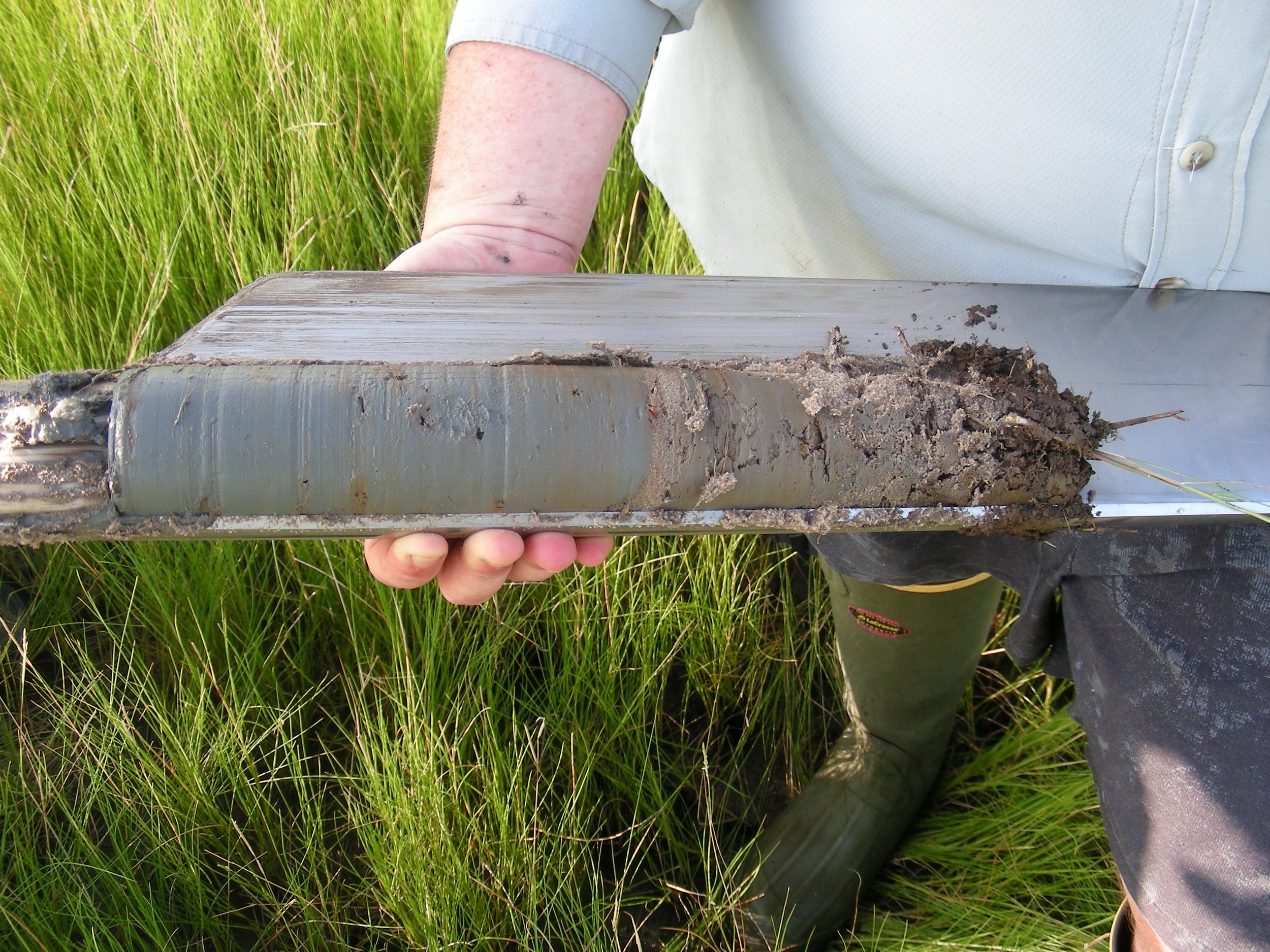
Current Research Themes
-

Effects of engineering organisms on the development of ecosystem functions.
We have a series of field studies testing the effects ecosystem engineers and environmental succession on tidal marsh function. For example, we are interested in how burrowing crab communities affect the development of sediment conditions and nutrient cycling as a tidal marsh ages. One goal of our work is to understand if burrowing crabs accelerate the recovery of ecosystem services (e.g., nitrogen removal, carbon sequestration) in restored and created tidal marshes. Many of our field sites are located along the Mississippi and Alabama coastlines. Conserving and restoring tidal marshes along the northern Gulf of Mexico is a critical step in building resilient coastlines—essential given expected sea-level rise in the Gulf region. We work with scientists at federal and state agencies, including the Weeks Bay National Estuarine Research Reserve, Mississippi Division of Marine Resources, and Grand Bay National Estuarine Research Reserve.
Example publication(s)
S. Rinehart, J.M. Dybiec*, J.B. Walker, L. Simpson, and J.A. Cherry. 2024. Effects of burrowing crabs on coastal sediments and their functions: a systematic meta-analysis. Ecosphere 15(1): e4927. 10.1002/ecs2.4927
Rinehart, S., J. M. Dybiec, B. Mortazavi and J. A. Cherry. 2023. Stratified vertical sediment profiles increase burrowing crab effects on salt marsh edaphic conditions. Ecosphere. 14: e4431. doi.org/10.1002/ecs2.4431
Walker J., S. Rinehart, G. Greenberg-Pines, W. White, R. DeSantiago, D. Lipson, and J.D. Long. 2022. Aboveground competition drives density-dependent effects of cordgrass on sediment biogeochemistry. Ecology and Evolution. 12: e8722. doi.org/10.1002/ece3.8722
-

Top-down regulation of microbial community structure and functions.
We use laboratory and field studies to understand how macroconsumers directly and indirectly effect the productivity of biofilm communities (e.g., microphytobenthios, biological soil crusts). For instance, we have projects evaluating how different snail consumers (detritivores and herbivores) and nutrient enrichment affect the carbon and nitrogen cycling of tidal marsh biofilms. Our work focuses on developing a generalizable framework predicting when, where, and how macroconsumers (e.g., snails, fiddler crabs, isopods) affect biofilm productivity— a species interaction that has been largely overlooked. We use field sites in drylands (Israel) and tidal marshes (Alabama).
Example publication(s)
Rinehart, S., and D. Hawlena. 2022. Top-down effects on biological soil crust function. Soil Biology and Biochemistry. 173: 108804. doi.org/10.1016/j.soilbio.2022.108804.
Rinehart, S., N.D. Shamir-Weller, and D. Hawlena. 2022. Snail mucus increases the CO2 efflux of biological soil crusts. Ecosystems. 25: 537-547. doi.org/10.1007/s10021-021-00670-4
-
Strategies for tidal wetland restoration and monitoring.
We use a combination of experimental and observational monitoring to inform best restoration practices for tidal wetlands. Specifically, we focus on understanding what factors accelerate the recovery and development of critical ecosystem services such as carbon sequestration and nitrogen storage and removal. We collaborate with colleagues from state, federal, and private research agencies along the Atlantic, Pacific, and Gulf coasts of North America.
Example publication(s)
S. Rinehart, J. M. Dybiec*, E. Fromenthal*, T. Ledford*, B. Mortazavi, and J. A. Cherry. 2023. Recovery of planktonic invertebrate communities in restored and created coastal wetlands along the northern Gulf of Mexico. Estuarine, Coastal and Shelf Science 291: 108417. doi.org/10.1016/j.ecss.2023.108417
J.M. Dybiec*, M.C. Sharbaugh*, S. Rinehart, and J. A. Cherry. 2023. Seasonal sediment dynamics in a constructed and natural tidal marsh in the northern Gulf of Mexico. Wetlands 43(70). doi.org/10.1007/s13157-023-01719-x.
E. Fromenthal, J.M. Dybiec, S. Rinehart, and J.A. Cherry. 2024. Variation in insect community structure between natural and constructed tidal marshes. Ecological Entomology In Press
-

Ethical standards for environmental field research.
Field studies are essential for understanding ecological processes in nature. However, field studies often require researchers to disturb animal communities, collect plant biomass, and trample soils and sediments. Despite the general awareness that such activities should negatively impact the environment, there have been few attempts to document and manage the effects of researchers and research activities on the biological structure and sediment properties of field sites. We are developing a ‘code-of-conduct’ for field research that aims to reduce our collective scientific footprint. We are approaching this project using methods and principles from ecology, social psychology, and resource management.
Example publication(s)
S. Rinehart#, J.M. Dybiec#*, P. Richardson#*, J.B. Walker#, J.D. Peabody, and J.A. Cherry. 2024. Researcher effects on the biological structure and edaphic conditions of field sites and implications for management. Ecosphere 15(1): e475010.1002/ecs2.4750.

